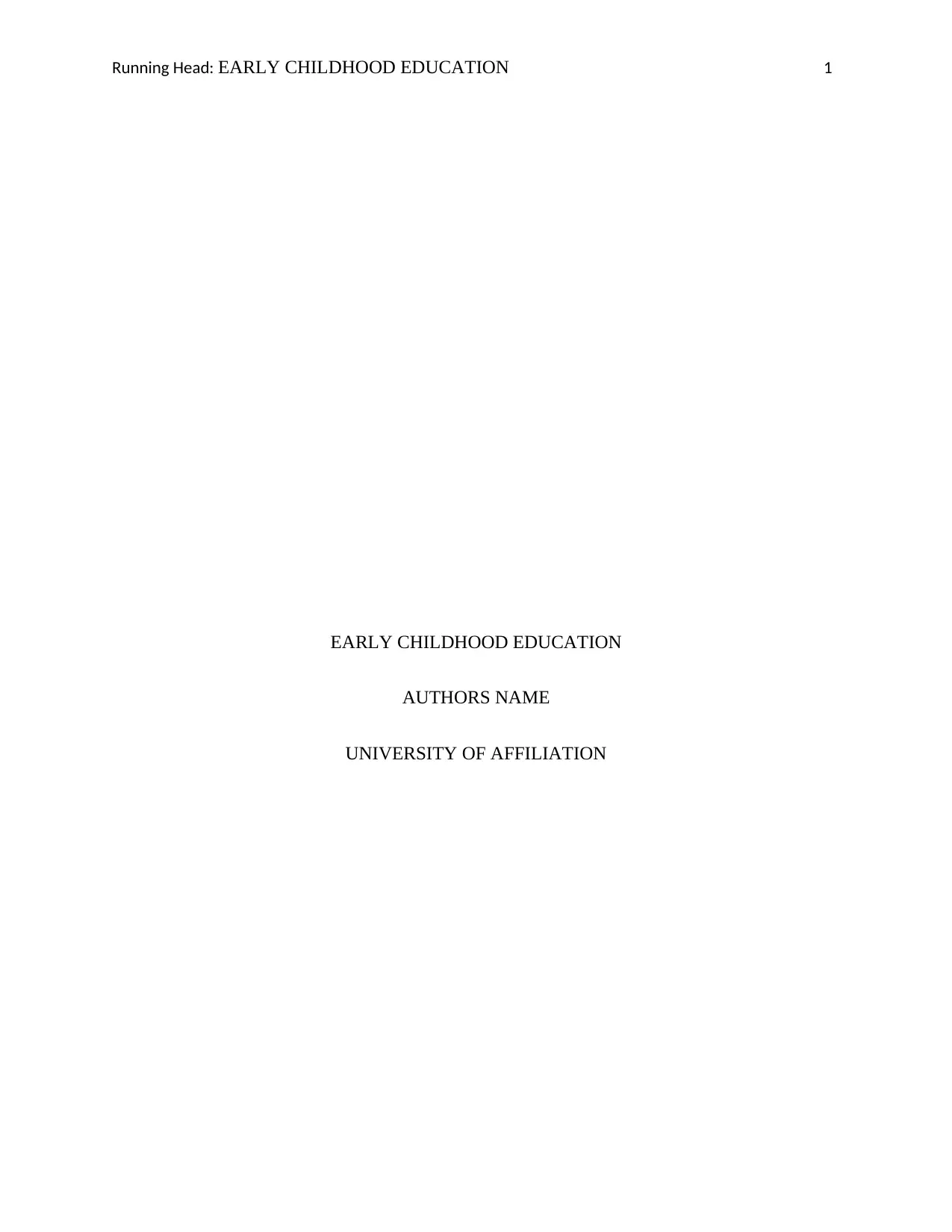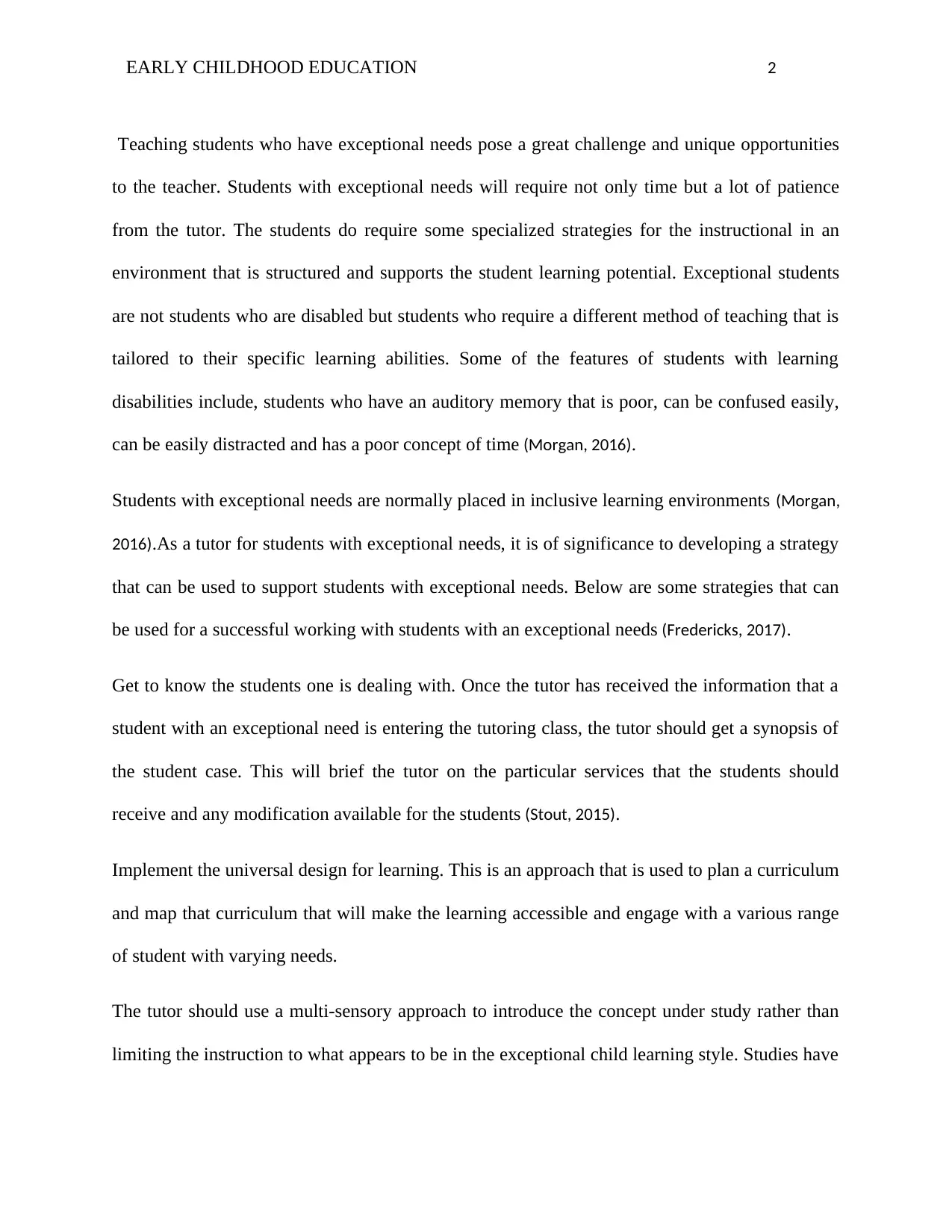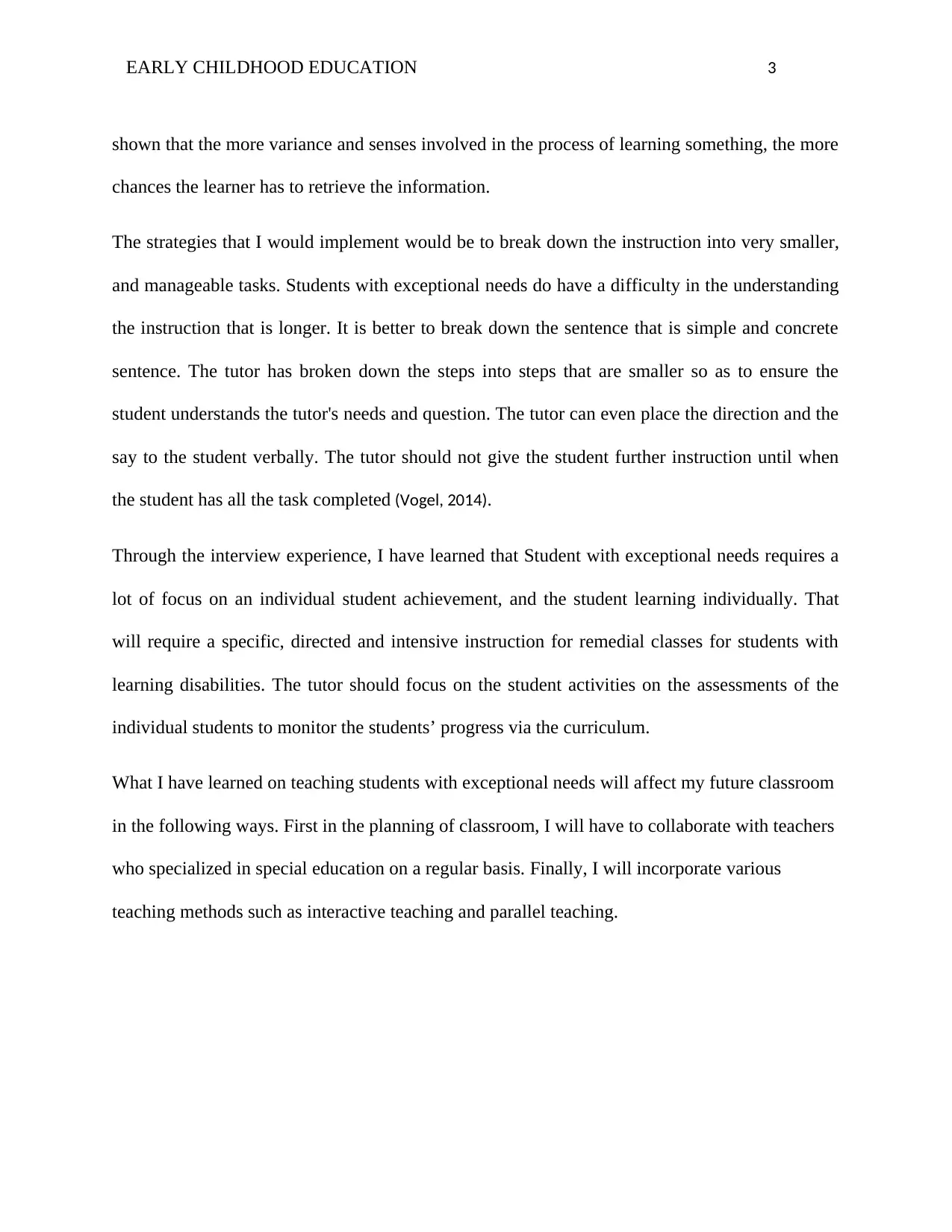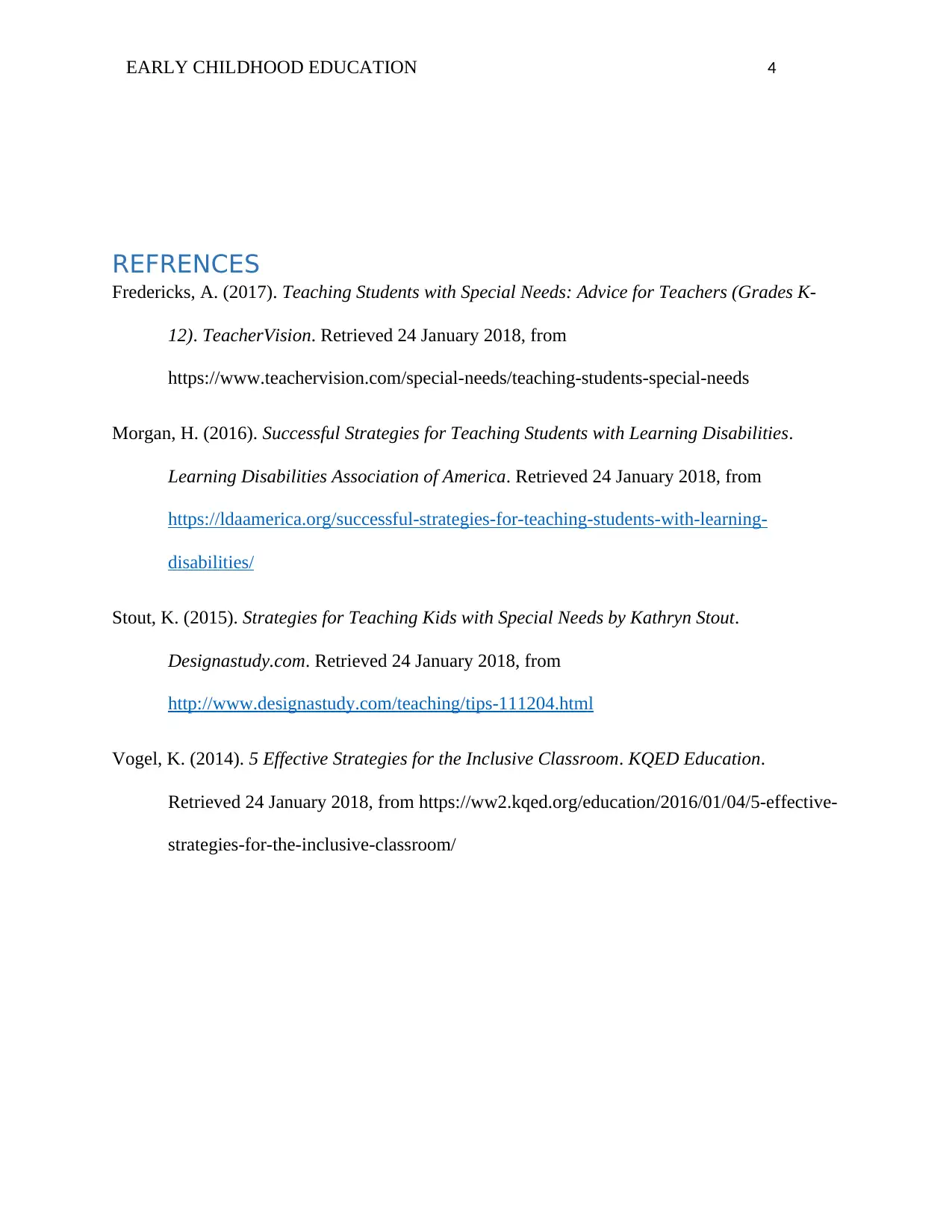Early Childhood Education: Strategies for Special Needs
VerifiedAdded on 2020/05/16
|4
|753
|81
Essay
AI Summary
This essay discusses strategies for effectively teaching students with exceptional needs in early childhood education. It emphasizes the importance of understanding individual student needs and implementing tailored instructional approaches. The author highlights the significance of specialized strategies, such as breaking down instructions into smaller, manageable tasks, and incorporating multi-sensory learning methods. The essay underscores the value of collaboration with special education teachers and the integration of various teaching techniques, including interactive and parallel teaching, to create an inclusive and supportive learning environment. The author reflects on how these insights will shape their future classroom practices, focusing on individualized student achievement and continuous assessment to monitor progress. References to relevant research and resources are included, providing a comprehensive overview of best practices in supporting students with learning differences.
1 out of 4










![[object Object]](/_next/static/media/star-bottom.7253800d.svg)